HMS Queen Elizabeth is due to sail from Portsmouth on Friday at 12:20pm.
The deployment ‘WESTLANT 19’, will see HMS Queen Elizabeth and her crew conduct vital deck and warfare trials with British F-35 jets. It is understood that 617 Squadron will embark on HMS Queen Elizabeth for the first time for this deployment.
617 RAF will be embarking from the UK with F-35s.
820 NAS and 845 NAS will be embarking with Merlin HM2 and MK4.
815 NAS and 814 NAS will be embarking the escorts with Wildcat HMA2 and Merlin HM2.
— The Brit (@TheBrit96) August 29, 2019
The jets will conduct Operational Tests, alongside 17 Test and Evaluation Squadron, onboard the carrier in the USA during the WESTLANT 19 deployment, proving their capability at sea.
The MoD say that this is vital step on the path to the first Carrier Strike Deployment planned for 2021.
HMS Queen Elizabeth @HMSQNLZ deploying from Portsmouth tomorrow at 1220. @NavyLookout @UKDefJournal @hthjones pic.twitter.com/hA5eIlUh9n
— The Brit (@TheBrit96) August 29, 2019
“Our aircraft carrier HMS Queen Elizabeth will return to the East Coast of the United States to conduct Operational Trials with our Lightning Force, taking this 5th generation capability to the next level as they prove their ability to operate from the sea.
For decades to come, this exciting new combination of aircraft carriers and F35B Lightnings will provide a potent, globally deployable carrier strike capability, a powerful conventional deterrent and the centrepiece of our country’s expeditionary forces.”
Recently, the 18th F-35B for the UK was delivered. Numbers right now are exactly where they’re expected to be and inline with the 2015 Strategic Defence and Security Review.
2 F-35B in LRIP run 3, 1 F-35B in LRIP run 4, 1 F-35B in LRIP run 7, 4 F-35B in LRIP run 8, 6 F-35B in LRIP run 9, 3 F-35B in LRIP run 10, 2 F-35B in LRIP run 11, 2 F-35B in LRIP run 12, 6 F-35B in LRIP run 13, 8 F-35B in LRIP run 14 and 7 F-35B in LRIP run 15. This brings us to 42 in 2023. The next run brings us to the total of the first batch of aircraft, 48.
It is hoped that 138 F-35 aircraft will have been delivered by the 2030s.



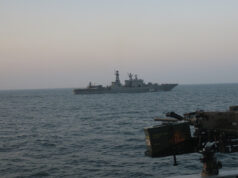
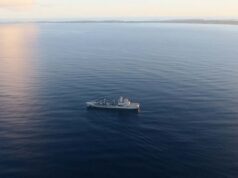
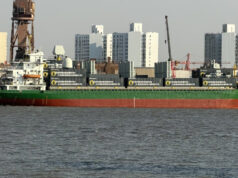
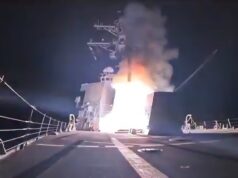
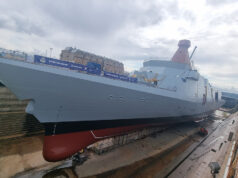


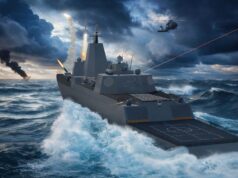
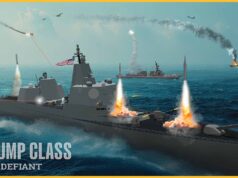
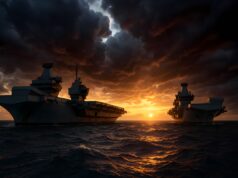

With the procurement being spread out over more than a decade the F-35 should go through quite a few changes. Are early examples expected to receive any and all upgrades and what are the chances of early aircraft being run into the ground so that newer aircraft can be kept in better shape and eek out the overall life of the program?
Currently aircraft are pending a upgrade 3i this is across the entire type, as they upgrade and move forward they are upgraded. but its like un-plugging a hard drive from your lap top and a new one installed. the advances like all computer based system is fast. the Orange wired aircraft at the test site are the oldest. upgrade 3F is pending allready and allows the aircraft to change mission operations in mid air. from full air to air to air to ground. upgrades are likely to be all internal and it ways of construction, and fuel burn.
There is also at least two planned upgrades for the F135 engine. There has also been a aerodynamic investigation in adding a lerx strip to the leading edge wing joint, much like the Typhoon’s. In simulations this increased the aircraft’s roll rate and enhanced lift at supersonic speeds. Not sure if they will go ahead with it though, as it was only a simulation.
Simulations are pretty good nowadays. Assuming they were high quality simulations, at least a £1m computer tied up for 24 hours a day for 3 or 4 days at a time for each simulation run which is the sort of scale of simulation that the major F1 teams use for their full-car aerodynamic simulation runs, I would expect the F-35 design team to have a pretty high confidence in the simulation results. Whether it gets funding though is a whole other issue.
On funding for enhancements, with F-35 still so controversial and still with very vocal critics, including presumably some politicians in positions of influence, is this making the funding environment for F-35 upgrades more difficult in the US? I can certainly imagine a certain anti-F35 lobby saying (and I’m just putting myself in their shoes and trying to imagine the arguments they might be making, not saying that they are accurate or that I agree with them) “the F-35 is a disaster, over budget and under-performing, so the last thing we should be doing is pouring even more money into this black hole for upgrades”. Again for emphasis, that was me imagining someone else’s attack strategy not my own thoughts!
All coming together nicely.
Yeah sure is, I wonder if we will see large drones flying from Hms QE in future.
Wonder how many F-35s and Merlins will be embarking….. looking forward to seeing pictures! It’s going to be an awesome sight!
3x Merlin Mk2
3x Merlin Mk4
(Estimated) 6x 617 Squadron F-35B
3x 17 Squadron F-35B
Apparently USMC aircraft will be paying a visit.
Should imagine at least two or three orange wired F35’s, Yes? No?
Which means at present numbers, we could be looking at a squadron with some still available for training.
Not only are 617 embarking but also a flight from the USMC once the ship arrives off the east coast. So there’s probably going to be three different F35B “squadrons” operating from the ship i.e. OEU, 617 and USMC. Hopefully it will make the press?
I’m hearing it’s 7 UK F35 from all three squadrons and extra USMC aircraft – up to 4.
I thought I read 9 were flying from the UK to USA then embarking in USA.
The pictures and video from last year are still excellent to look at and watch. It will be great to see a few more jets on the flight deck this year
I see there is also a French frigate alongside in Portsmouth. As France is also a participant in this exercise, perhaps she will form an additional escort to the HMQE task group.
I guess we will know that sometime Friday afternoon.
What’s happened/happening with the planned follow-up documentary, Britain’s Biggest Warship?
Will be airing during westlant 19
Pre lot 8 F-35 are probably not suitable for combat. Luckily the UK has only 4 of those, but it does mean the claim of 42 F-35B by 2023, is really 38 combat capable.
Yet another good reason for us to allocate serious funding to our armed forces, including ASM’s sooner rather than later.
“For decades to come, this exciting new combination of aircraft carriers and F35B Lightnings will provide a potent, globally deployable carrier strike capability, a powerful conventional deterrent and the centrepiece of our country’s expeditionary forces.”
“The study by the United States Study Center, at the University of Sydney, in Australia, warned that America’s defense strategy in the Indo-Pacific region “is in the throes of an unprecedented crisis” and could struggle to defend its allies against China.”
https://edition.cnn.com/2019/08/20/asia/australia-china-us-military-report-intl-hnk/index.html
The Wildcats will also have Sea Venom by (2020) next year.
Why isn’t the Merlin cleared for Martlet and Sea Venom?
Apparently; The 28 Royal Navy Wildcat helicopters will be able to carry four Sea Venom missiles each, no other UK aircraft are currently planned to carry it and no surface launch variant either.
Seems a massive oversight, when T26 will only be operating Merlin.
About time, I was watching a documentary about the lynx yesterday and it was amazing, fastest helicopter on earth for decades, so would that make the wildcat faster now ? Or have they even tried I wonder. But that lynx documentary with the lynx in the falklands was great I didn’t know 3 ships and one submarine were hit by lynx weapons like sea skua and a torpedo and put out of action by the lynx helicopter, Hell I didn’t even know we sent 27 lynx to the falklands war and we lost no lynx.
We did lose Lynx – just not in ‘direct’ combat -by that I mean shootdowns-. 3 were lost aboard Ardent, Coventry and Atlantic Conveyor.
“It is hoped that 138 F-35 aircraft will have been delivered by the 2030s.“
One would hope; although it is also conceivable that with such a long delivery schedule we will not operate all aircraft at the same time, and perhaps the most we will have in active service at any one time during the F35’s service life will top out around the 100 mark. This just about covers the old Harrier fleet (with a much more capable aircraft than Harrier, which is undoubtably a force multiplier), but the Tornado fleet has been retired without replacement, and not much is really said about that in the wider media.
Such a slow order rate for the F35 is a shrewd piece of business by the MoD, as it keeps costs down, but it does make it imperative to stick to a single type of F35, specifically the B version, to maximise the number of aircraft available to the carriers. However, it’s ironic because if the order rate was increased, there would be the opportunity to purchase a mixture of F35A and F35B variants, which would bring cost savings that might enable a larger total number of F35 airframes to be bought by the UK and allow for the F35B variants to be ringfenced for maritime use. Such a policy though would inevitably be high risk, as any saving from switching orders from B to A variants would most likely be pocketed by the Treasury and the MoD would be stuck with the same number of 138 F35s, but broken down into an awkward number of a few dozen Bs and under 100 As, which would limit maritime operations and please no one.
It’s a shame numbers have been allowed to be whittled down, I think it will be very difficult going forward to justify growing the number of airframes. I don’t think we can adopt the same approach with Tempest, if it ever gets greenlit, because I think the project would quickly cease to be economically viable.
Still, it will be great to see the reports from the exercises and how all assets work together.
Only issue with having both A and B variants is that although it could save money which could then be used on more airframes, once you take into account that we would need two separate OCU squadrons, one each for the A and B variants, and then two separate pools of spares, the might not be any extra aircraft available for combat, compared to if we just stuck with the B variant.
The only way I think we could order F35A would be if there were a significant increase in defence spending; say to 2.75-3% of GDP. If that were the case then yes, I’d say let’s get 4 squadrons of F35A (48 planes) plus OCU and spares – perhaps 80-90 planes total?
Admittedly, that’s purely wishful thinking as there’s little chance of any significant budget boost anytime soon. One can dream, however…
If the Japanese can do it we can. We had 4 different kinds of fast jets not so long ago, two different F35s shouldn’t be that difficult to maintain without spending billions extra. We have cut so many of our squadrons and warships so we should have the dam money. But they always say we don’t have it for a reason even if we do have it. There’s a saying – always say your skint but never be skint. Look at all the aircraft alone we have lost it hundreds and hundreds and 5000 RAF personnel in 2010. We have to spend the money again we deserve a great millitary.
The difference is that the Japanese are not also building 4 new ballistic missile submarines at the cost of £31billion+
I agree that we should order some F35As. But only if they are in addition to the current order for 138 F35Bs, not instead of. If 138 is all we get, and even then maybe only 80-90 actually in service at any one time, then they all need to be able to jump onto our carriers when the need arises.
By all means, if MoD gets a substantial budget boost from the Treasury then I’d say order F35As and make them purely for the RAF.
To be honest if they just hurried up with the bloody ordering we could just have the 138 we’ve committed to, get them in sooner and from that we could easily stand up 5 or 6 frontline combat squadrons!
Yeah with the drawn out ordering I agree we would be lucky to have 90 in service at one time, so best to stick with F35B.
I do find it frustrating that the Tornado fleet has been allowed to be retired with nothing to replace it, not even a future design study or a commitment to expanding our drone capabilities. At the very least we could get some more Typhoons and get them upgraded with AESA radar, conformal fuel tanks, and the increased thrust EF200 engines
I don’t think we will ever see more than 80 F35bs active at one time and that’s being generous as not all will be front line capable!! They are being delivered too slow.
We need large numbers of fast jets like we used to have, and we as a country have never been as rich as we are today so we can afford it, we had a millitary 3x our current size when we were a far poorer nation a few decades back. It’s political will, and I’ve not heard one politician talk about how they’ll help our millitary and increase numbers or even mention anything atall! All i hear is the dam “NHS” “education” “POLICE NUMBERS” we need more navy ships, army troops, RAF planes and jets we spend hundreds of billions more on the NHS and education and the police than our millitary!!
I wonder how many low rate initial production contracts there are going to be, If memory serves 2015 then 2018 was going to be the last before Full rate production kicked in. They are due to stop making F35’s in about 11 years from now and the current production rate exceeds the production rate of every other western fighter combined. Thankfully we did not buy too many in the first lots that we would have to write off now but one wonders how the Americans put up with us being a tier 1 partner and buying less jets than almost anyone else.
One the 138 jets figure we should remember that at the time that figure was suggested the F35 was suppose to be a cheap as chips F16 with stealth type aircraft. Over the years the envisaged scope of the weapons system has improved dramatically. No doubt just 12 F35’s showing up on an adversaries door step would be a big problem. 138 could probably fight their own war.
CVF with F35B is proving every day to be the best way to go. Once the Trump era Pork Barrel politics come to an end and the USA is saddled with a massive debt mountain I think you will see the USN going the same way. Its going to be increasingly hard to justify $14 billion dollar Aircraft carriers with crews of 4-5,000 and 6 months of training to work up pilots for a 6 month tour. When I can get a four America Class for the same money.
In 50 years time people will look at carriers with steam catapults and controlled crash landings in the same way we look at bi-planes being grabbed by people on the back of HMS Furious in WW1.
The QE Class is the first properly thought through and designed full size STOVL carrier, so it will be interesting once they are in full service to see how they perform alongside other carriers, specifically the Nimitz class and CDG.
The Invincibles and the various foreign knock offs have always been limited by their size and constrained deck space, while the Sea Harrier was also tasked to do roles the original air frame was never intended for, and was another compromise. The FA2 did much to address this, and was a very capable aircraft, but ultimately the sub-sonic speed, poor range and endurance, and the lack of engine power/thrust in hot and high conditions that severely restricted its max landing weight were significant flaws for a fighter aircraft.
The F35B on the other hand, is a much more grown up aircraft, as one would expect, designed from the ground up to be a supersonic STOVL multirole fighter. The larger deck of the QE class is also a great benefit as it allows for a higher tempo of operations, such as the rolling landing.
That’s not to say though that there aren’t still compromises:
– the F35B has less range, payload capacity and weapons fit than the F35C model, and we are limited to only operating STOVL aircraft for some time to come. The overall cost of the F35B also means that (with our Treasury) we will operate roughly the same number of jets that we used to squeeze into the old WWII carriers during the 50s and 60s. Sortie rates will undoubtedly be higher operating off a larger aircraft carrier, but deck size is not the only factor in determining sortie rate, numbers of aircraft available is also crucial: an aircraft even as technologically sophisticated as an F35B can only manage one sortie at any one time and exist in one area at any one time after all.
– the RN still has to put up with an inferior AEW platform to those of our US and French allies, although its not clear if there is any more suitable STOVL AEW platform currently available, as I think purchasing V22s would be both expensive and an unknown quality. On balance it is good to stick with Merlin Crowsnest for now and see if a future UAV could offer a solution, or a next generation tiltrotor style aircraft might prove itself to be more reliable and suitable for RN use.
But, all in all, these compromises are nothing compared to those of the Invincibles and the Sea Harrier and it should be easy enough to either accommodate them or work round them. I don’t think the USN will switch over to STOVL, nor do I think other nations such as China will stop their quest for full size CATOBAR carriers, but the QE Class with F35Bs is a good fit for the UK and should provide excellent service despite its inherent limitations.
The great shame is that both the QE Class and the F35B programme matured in the aftermath of the financial crisis and the steep drawback of UK defence spending, as this has severely curtailed fast jet numbers generally and set the tone for a much reduced Armed Forces. The danger with any defence cuts is that they set a precedent that the services can do with a reduced number of certain personnel, equipment or skills permanently, even when a particular defence cut was intended only to be temporary.
Against this backdrop, it’s quite an achievement that both Queen Elizabeth and Prince of Wales are slated for service with the RN, however it is important to keep pushing for a full complement of F35Bs to operate from the carriers, and not allow the regular cross decking of significant numbers of F35Bs from allied nations to become the status quo, as going forward politicians will see this as the new normal and procurement decisions for future aircraft will be based on that assumption.
You raise a very important point regarding AEW. The US Navy trialled an Osprey with a crowsnest style of radar over 10 years ago. The radar was attached to the ramp and then lowered in flight. It worked, but it didn’t have the range the Navy were looking for.
Jump forward 10 years, the USMC and Navy are urgently looking at the Lightning carrier concept. Primarily due to the delays with the Ford class that can’t operate the F35C. The major issue is that the Wasp class does not have a catapult or arrestor wires, so a Hawkeye cannot operate from the deck. The USMC requires airborne communications node that is not reliant on satellites, but can also provide local AEW support. The V247 Vigilant was originally going to be a close air support UAV. This has now changed to a AEW+comms UAV with an urgent priority to get the system working as soon as possible. The work is such a priority that the USMC has cancelled all major upgrades to their F18 fleet to pay for it.
So their requirement is for a vertical take off and recovery vehicle, that has a 12 hour mission duration and can operate at 25,000ft. The aircraft must have the ability to operate from a destroyer helipad. Therefore the V247 will have a swivelling wing like the V22 and folding proprotors. With everything folded it has the same footprint as a Huey, so much like a Lynx. This aircraft would be the ideal replacement for a Merlin equipped with a crowsnest system. As not only could it operate from the carriers, but pretty much any ship that can use a Lynx.
The radar that is going to be used has not been announced, although there is speculation that it may be a derivative of the F35s APG-81.
Cheers DaveyB, that’s very interesting – the V247 programme sounds like a great opportunity down the line for the RN. I was also thinking whether the V280 Valor might be a suitable manned platform, but if the Americans are ploughing the money into V247 to do AEW anyway then we may as well wait for that.
Being able to deploy V247 from T45 and use it for AAW target cuing for surface vessels would be an excellent additional capability for the surface fleet…
Yes, there has been a US Navy Vice-Admiral giving a brief on how they are investigating dealing with swarm attacks on future carrier battle groups. He described using a VTOL asset from the back of a Ticonderoga cruiser. The cruiser would purely be armed for air defence. The Ticos have 122 MK41 VLS cells so would carry a mix of long, medium and quad packed short range missiles.
Now, if the ship had a V247 using a APG-81 derivative radar. This would give it a very good over the horizon capability. Using a multi-functional advanced data link (MADL), Link-16 data link and cooperative engagement capability (CEC) and data from the UAV any airborne threat will have a much harder time reaching the ships.
It’s a pleasant change to read the list of units participating in this deployment. It does seem we’re moving closer to the size of a full deployment. They’re not listed here but are any Royal Marines deploying on the exercise this time, aside from the assumed FPG lot?
Good point – 845 NAS is taking part presumably they’ll also be practising how commando forces are included into the air group
845 will perform COD and plane guard duties too, I guess.
Safe trip lads and lasses. Stay safe, I hope you have calm seas